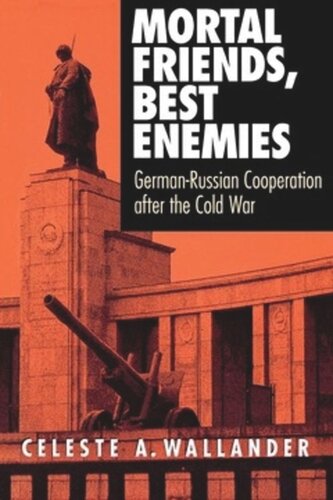

Most ebook files are in PDF format, so you can easily read them using various software such as Foxit Reader or directly on the Google Chrome browser.
Some ebook files are released by publishers in other formats such as .awz, .mobi, .epub, .fb2, etc. You may need to install specific software to read these formats on mobile/PC, such as Calibre.
Please read the tutorial at this link: https://ebookbell.com/faq
We offer FREE conversion to the popular formats you request; however, this may take some time. Therefore, right after payment, please email us, and we will try to provide the service as quickly as possible.
For some exceptional file formats or broken links (if any), please refrain from opening any disputes. Instead, email us first, and we will try to assist within a maximum of 6 hours.
EbookBell Team

4.7
106 reviewsSeveral hundred thousand members of the Red Army were stationed in East Germany when that state was reunited with its western counterpart. The peaceful transfer of these soldiers to their homeland produced a welcome outcome to a potentially explosive situation. Through an investigation of the strategies of German and Russian decision-makers, Celeste A. Wallander explores what conditions facilitate or hinder international cooperation in security matters.Wallander spent the months and years after the fall of the Berlin Wall interviewing officials and politicians from Germany and Russia. She reveals how these individuals assessed and responded to potential flashpoints: the withdrawal of Russian military forces from Germany, the implementation of arms control treaties, the management of ethnic and regional conflicts. She also examines the two states' views on the enlargement of NATO.The first detailed account from both countries' perspectives of the extraordinary contraction of Russian power and the implications of German unification, Mortal Friends, Best Enemies clearly depicts the important role European and global institutions played making the military disengagement possible. Wallander draws on these findings to develop a new institutional theory of security relations. In it she defines the techniques that international institutions can use to help states solve obstacles to security.